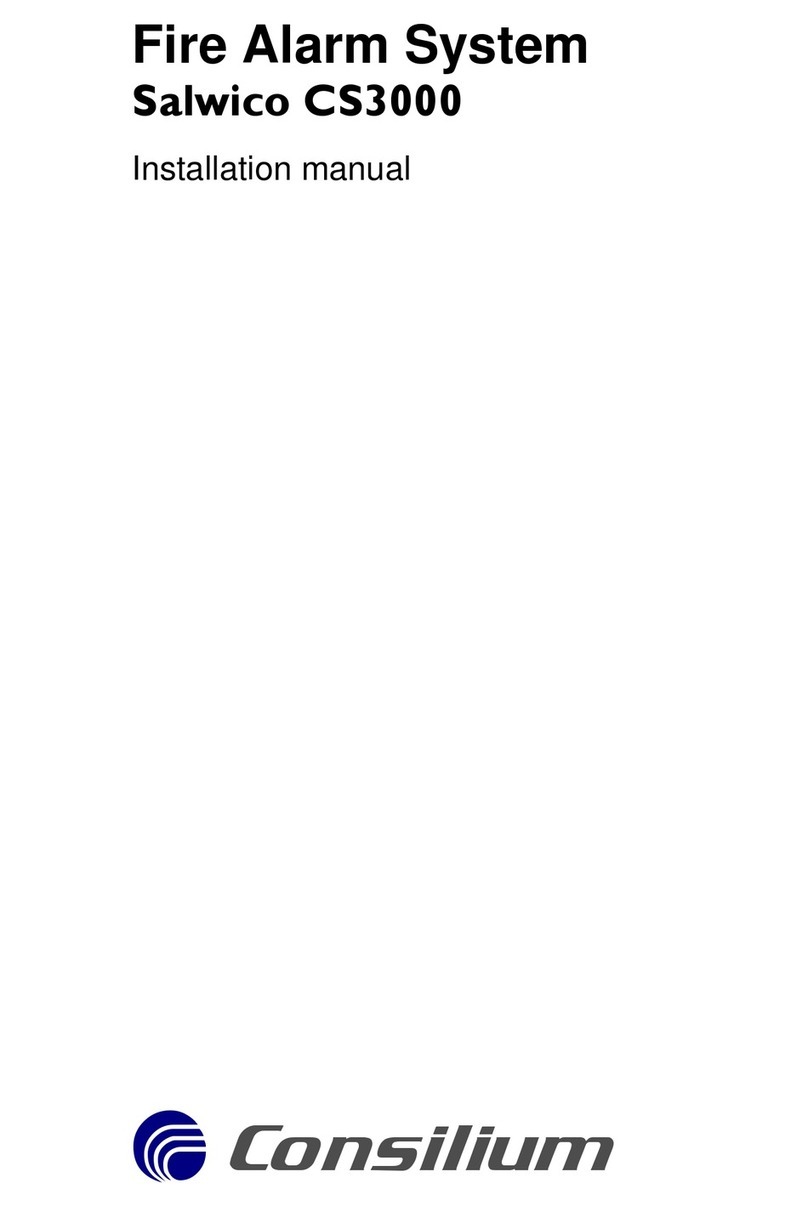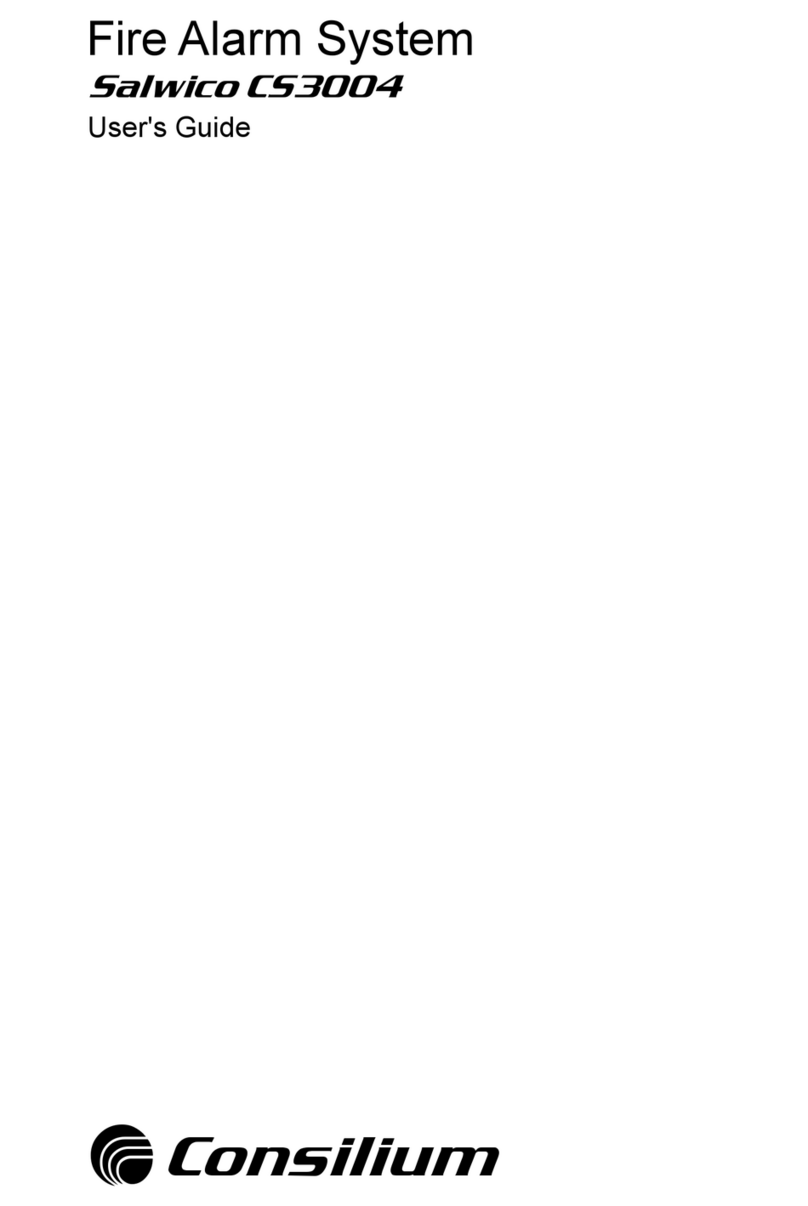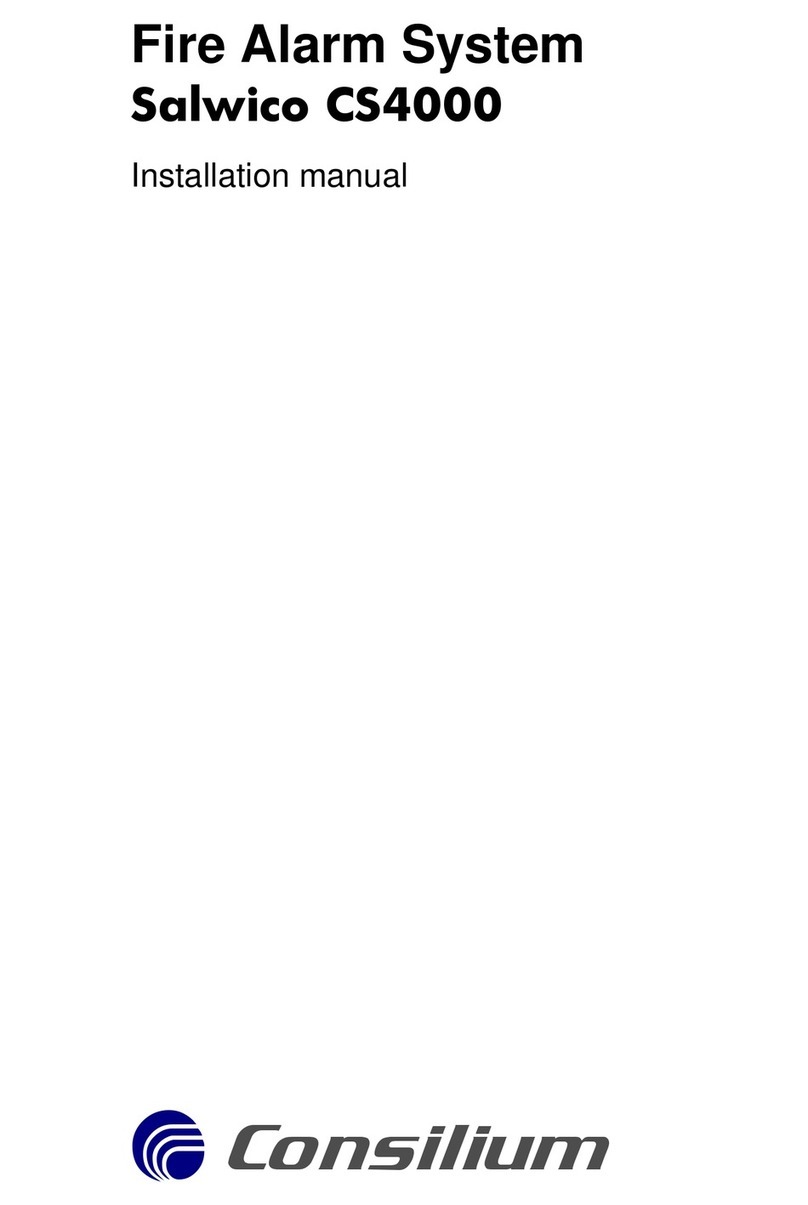
User’s Guide Chapter 1: CS3000 Fire alarm system 1-1
CS3000
Chapter 1: CS3000 Fire alarm system
Introduction
The CS3000 is a computerised, fully addressable analogue fire alarm system
with analogue detectors. The detectors are automatically tested and
continuously supervised by the central unit. In the event of fire the appropriate
output channels are activated controlling fire-damping measures. At pre-set
fixed intervals the system actively checks that all connected units are in
working order and that the content of the system is according to its
configuration.
The fire alarm system can be divided into several geographically separated
central units and control units, which are inter-connected into a larger system.
Conventional detectors and sensors of closing type can be connected to the
CS3000 system, in addition to the analogue detectors.
The operator supervises and operates the system from one or more control
units, which normally are placed at convenient locations, separated from the
central units.
The different central units and control units of the system communicate with
each other on the system loop, consisting of two RS-422 channels.
The central unit and its detectors communicate on two-wire loops. The loop
can either be a single-ended branch line, a two-way closed loop with or
without connected branch lines. The communication method is based on
frequency modulation (FSK). Each detector is connected to its loop via a
specially developed integrated circuit, IDA, for supervision and
communication. The detectors are normally power supplied from the loop.
In this document “loop” refers to the physical loop as described above. The
physical loop can be divided into max 5 “zones” with a definition program. A
zone can either be the entire loop or a part of a loop.
A system may contain max 999 loops, with max 64 loops per central,
including 400 conventional loops. One loop may have a total of max 150
analogue loop units.
When more than 15 alarms are activated on the same loop all output channels
controlled from that loop are activated (even when controlled from section
units that do not have an active alarm).
This User’s Guide describes the CS3000 fire alarm installation in a marine
environment.
Control unit
All communication between the operator and the system is performed via the
front panel on the control unit, that has been designed for ease of use. If the
CS3000 system detects a fire, fault, abnormal condition or change in the
system status, this is displayed on the control unit panel. The operator can
control and check a number of functions in the system. To make it easier for
the operator to handle the functions, they are divided in to three levels. Each
level is protected by an access code that can easily be changed by the operator.
The following functions are available in the system:
−Disconnection of loops, zones, detectors, manual call points, loop units,
alarm devices, external controls.
−Electric isolation of a loop.
−Reconnection of all disconnected units.
−Display of all events present in the different lists in the system.































